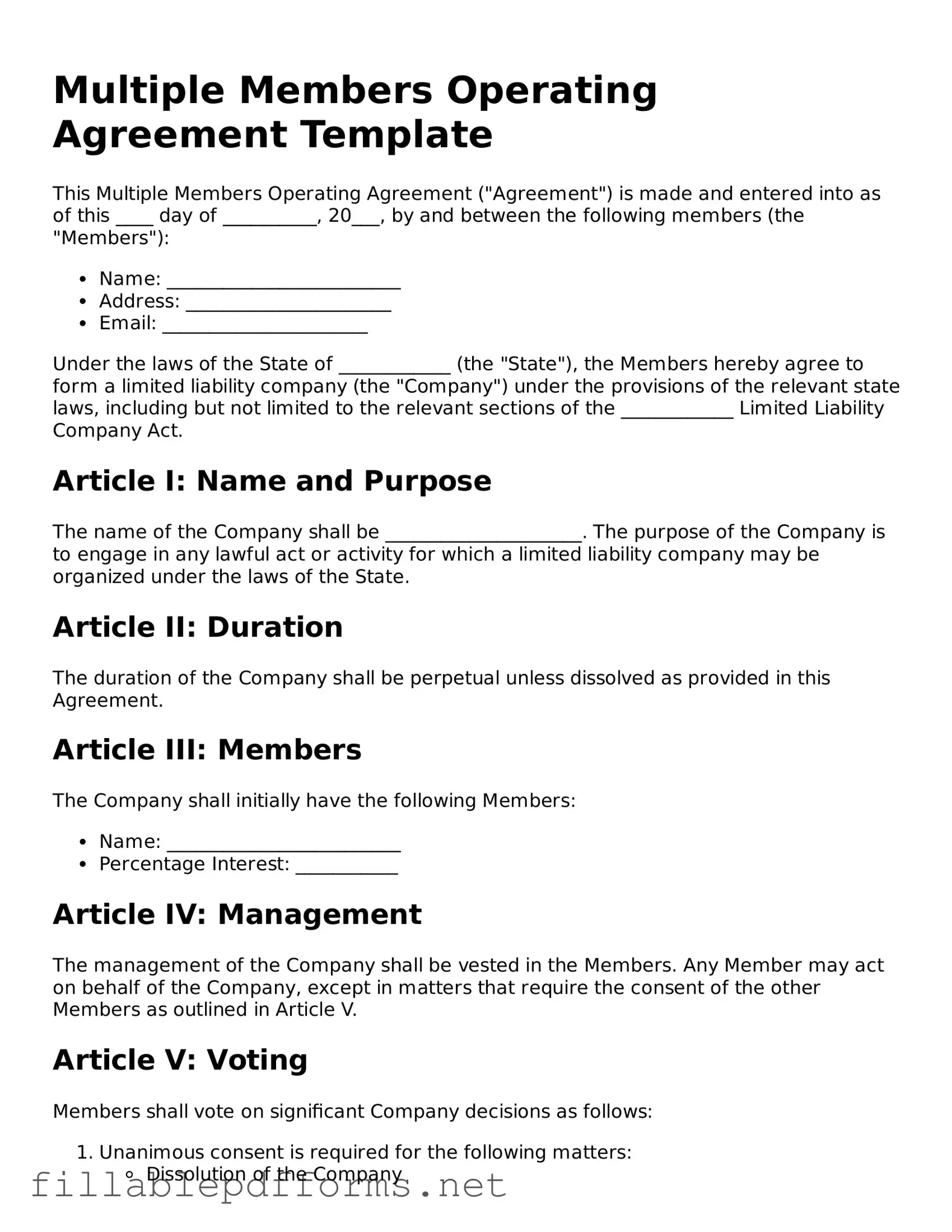When multiple individuals come together to form a business entity, clarity and structure become paramount for successful collaboration. A Multiple Members Operating Agreement serves as a foundational document that outlines the rights, responsibilities, and obligations of each member within the organization. This agreement not only delineates how decisions will be made but also addresses how profits and losses will be distributed among members. Additionally, it provides guidelines for the management of the business, including the appointment of managers and the procedures for adding or removing members. By establishing a clear framework, the agreement helps to prevent misunderstandings and conflicts that can arise in a multi-member environment. Furthermore, it can include provisions for dispute resolution, ensuring that any disagreements are handled amicably and efficiently. Ultimately, a well-crafted Operating Agreement is essential for fostering a harmonious and productive partnership among members, enabling them to focus on their shared goals and the growth of the business.
